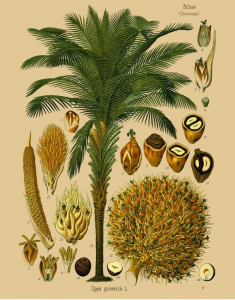Published on: December 22, 2020
If you were to walk through the palm oil groves of equatorial West Africa, you might find it difficult to distinguish between these man-made agroforests and the native forest from which they emerged. Such is the diversity and complexity of these traditional agroecological systems. In them lies the key to regenerating what has become one of the most controversial crops, agricultural systems and industries in the world.
Palm Oil (Elaeis guineensis) originated in West Africa’s Gulf of Guinea (as far north as Guinea-Bissau and as far south as northwest Angola), and, for the indigenous peoples of the region such as the Yoruba, it has for millennia been considered ‘’the tree of life’’ and used for a wide variety of culinary, medicinal, cosmetic and spiritual purposes. Mixed intercropping and shifting polycultures incorporating palm oil have been a dominant aspect of indigenous agroecology for millennia. Their production systems make use of groundcover and understory crops that suppress weed growth, increase yields and optimize the growing conditions for palm oil by increasing light, water and nutrient availability. These farming communities have understood the importance of maintaining the health of the local ecosystem for their livelihoods and those of future generations.

Palm can be grown for good, bringing benefits to:
Together, we can influence change for: